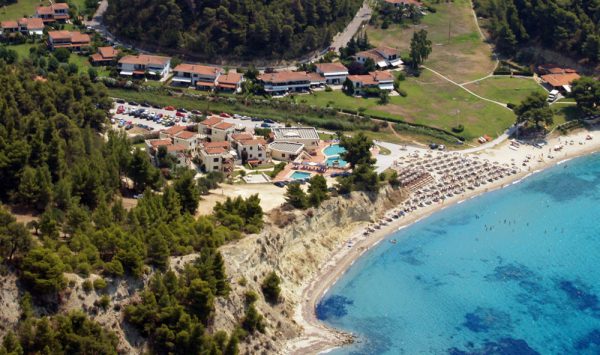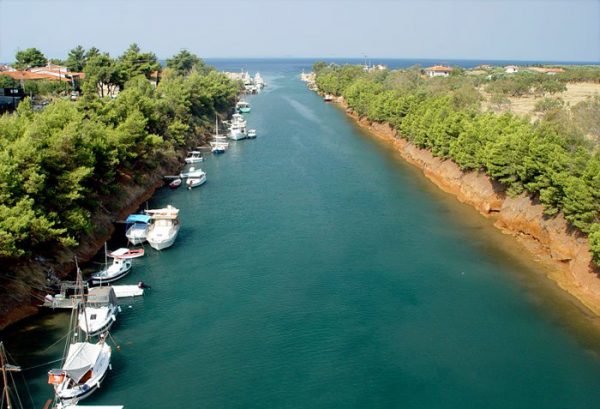Pallene is the ancient name of the westernmost of the three headlands of Chalcidice, which run out into the Aegean Sea. It is said to have anciently borne the name of Phlegra and to have witnessed the conflict between the gods and the earthborn Gigantes. The modern name of the peninsula is Kassandra, which, besides affording excellent winter pasture for cattle and sheep, also produces an abundance of grain of superior quality, as well as wool, honey, and wax, besides raising silkworms. In antiquity, Pallene was the site of numerous towns: Sane, Mende, Scione, Therambos, Aege, Neapolis, Aphytis, which were either wholly or partly colonies from Eretria. Strabo mentions the following five cities of Pallene in the 1st century BC (Cassandreia, Aphytis, Mende, Scione and Sane). After the founding of the Roman colony of Cassandreia (43 BC), the entire peninsula of Pallene was included in the colony territory. In Late Antiquity, the center of the peninsula was the city of Cassandreia, located at the site of ancient Potidaia. A polis and a bishopric, Cassandreia was destroyed by the Huns in 539 or 540 AD. After this, Emperor Justinian I built a wall at the entrance of the peninsula, but it is not until the 10th century that a sizeable settlement—described as a township (polichnion) and later as a fortress (kastron)—re-appears in the peninsula and that the bishopric is mentioned again, as a suffragan of Thessalonica. The area prospered due to its fertility, and both Thessalonians as well as the monks of the growing monastic community at nearby Mount Athos had estates there.

Kassandra was one of the places that rebelled against the Ottomans in 1821. Because it managed to stop the Turkish army from fighting the south Greece rebels it was burnt from edge to edge. The refugees moved with fishing boats to the islands of Skiathos, Skopelos, Alonissos and Evoia. Nobody lived in the peninsula for more than 30 years. Then the population started to gather again. In 1912 it became a part of Greece. The peninsula was lined with paved road in the mid-20th century. Tourism also arrived beginning after the war period of World War II and the Greek Civil War. More paved roads were added in the 1970s and the 1980s and tourism popped out. Agriculture shifted to tourism and other businesses as its primary industry in the 1980s.

In the winter of 1307/08, the peninsula and the city were seized and held by the Catalan Company during their move from Thrace to southern Greece. The 14th-century historian Nikephoros Gregoras describes Kassandreia as “abandoned” during his time, and sometime before 1407, Emperor John VII Palaiologos rebuilt the old fortifications of Justinian. As a de facto annex of Thessalonica, the peninsula shared the city’s fate and came under a brief Venetian control in 1423, before being captured by the Ottoman Empire in ca. 1430. Kassandra (Turkish: Kesendire) was one of the places that rebelled against the Ottomans in 1821. Because it managed to stop the Turkish army from fighting the south Greece rebels it was burnt from edge to edge. The refugees moved with fishing boats to the islands of Skiathos, Skopelos, Alonissos and Evoia. Nobody lived in the peninsula for more than 30 years. Then the population started to gather again. In 1912 it became a part of Greece.

Transfer Thessaloniki is the best way to discover this beautiful place! We are here to transfer you from Thessaloniki Airport to Kassandra Halkidiki. Your transfer, is our pleasure!
